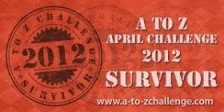| Trokh Word List | |
| aikoho | "many ships", fleet |
| khoiaya | armor |
| afeahyalhtow | popular Aslan pet; flying carnivore/killer |
| ayakyuir | carnivore native to Kusyu, noted for speed and ferocity |
| Akoaft | "Far Throwing" - artillery |
| Soarl | "elite" |
| Trekhyair | "land protector" clan military force |
| Ahr’eah | "armed pride" - platoon or company |
| Areiale | "they who sprint" – marines |
| Ekho’ear | "armed family" – squad |
| Hraye | "wanderer" – scout |
| Hryo | "half dozen" - a squadron |
| Huih’eal | "armed clan" – battalion or regiment |
This list of words provides some useful starters, but I think I will have to generate more.
The Personnel figures I generated for each Huiha and E'kho of the Huiha Esoyatre in part 1 of this article were drawn from the populations of each of the Aslan worlds within the hasoi of Huiha Esoyatre. Consulting Alien Races 2 and Solomani and Aslan I determined that 10% of the population, or population resource equivalent, were currently available for Military service. This is a little higher than normal, but the Huiha Esoyatre shares border space with two potential enemies - the Imperium and the Kalar-Wi - and annexed a Kalar-Wi system only four years ago, so political tensions are elevated.
I had earlier determined, using the tables in GURPs Traveller Ground Forces, that the Huiha Esoyatre had some 3000 battalion equivalents available for offworld deployment as a Tech Level 12 force. The choice was made by the Huiha government to upgrade part of this force to Tech Level 14, and this produced 3 Elite Corps, 3 Elite Divisions and two Elite Independent Regiments equipped to TL14, and 10 Corps, two Independent Divisions and one Independent Brigade equipped to TL12. The equipment upgrade reduced overall numbers to about 1000 battalion equivalents.
When I looked at the Geithurian Republic Table of Organization, I essentially started with the first formation and then assigned battalions to it, before moving on to the next formation. With the Unified Imperial Army Gamelea Command, I worked out possible ranges of unit numbers across all Imperial Subsectors in the RimWorlds, and then assigned units to each formation within the Gamelea and Miazan Subsectors from the available units for those Subsectors. The Huiha Esoyatre, however, was a little different.
.With essentially a feudal form of government, each E'kho is required to contribute personnel and units towards the trekhyair, or "land protector", force of the Huiha, or clan, and each lesser clan is required to contribute units toward the trekhyair of the dominant clan of the Huiha. All these subordinate forces remain under the control of the contributing E'kho or Huiha, even if they fall under the command of the senior E'kho or Huiha. To begin to untangle this knot, I had to know how many personnel each E'kho was able to contribute; work out the percentage of the total trekhyair this represented; and then work out what percentage of the 1000 battalion equivalents already determined as making up the Huiha trekhyair each E'kho's contribution actually numbered.
Did I really need this information? No. But I did want to capture the flavour of an Aslan force, and creating this background material contributes to the richness of the mileau. Also the numbers, as they came up, posed questions as to how politics within the Huiha Esoyatre actually worked, and answering these questions gave me a clearer picture of the Huiha as a whole.
After a little number crunching, I arrived at the following raw figures:
| Huiha or Clan | Battalions by system |
| Huiha Esoyatre | Yuwe: 18 Battalions; Yuakteisye: 192 Battalions; Faiwawhwe: 75 Battalions |
| Huiha Uahwil | Yuakteisye: 1230 battalions; Faiwawhwe: 72 battalions |
| Huiha Aiaihfa | Yuakteisye: 600 battalions; Faiwawhwe 66 battalions |
| E’kho Hraktiskear | Atlasiykh: 1 battalion |
| Huiha Hwouwoahiw | Faiwawhwe: 132 battalions |
| Huiha I’iyheas | Faiwawhwe: 141 battalions |
| Huiha Eakteaei | Faiwawhwe: 153 battalions |
| Huiha Awuahra | Faiwawhwe: 150 battalions |
| Huiha Htualraluikh | Faiwawhwe: 144 battalions |
| E’kho Hroukhteftai | Yaitlaorail/Kidan: 1 battalion |
As these battalion equivalent numbers were based on the original TL12 3000 battalions, I decided that I would arbitrarily reduce the strength of the larger clans by a third to reduce the over-all total of battalions to better match the formations I had originally generated from GURPs Traveller Ground Forces. One thing that did give me a little wriggle room was the fact that the Aslan don't have set sizes for various units - squads, for example, can vary between 4 and 12 soldiers.
Huiha Esoyatre is both the dominate clan of Yuwe, and the clan that dominates the wider hasoi, even though in military numbers Huiha Esoyatre falls behind Huiha Uahwil and Huiha Aiaihfa. However, Esoyatre's strength may lie in the fact that its four families work more in harmony under the leadership of E'kho Hleahayaou then the eight familes of Huiha Uahwil and the seven families of Huiha Aiaihfa work together under their leading E'khos. Add in political and traditional ties between E'khos of the Great Huihas, as well as alliances with the Lesser Huihas of Faiwawhwe, and interfamily and interclan relationships, and the political landscape of the Huiha becomes a scintillating web of connections. A web that can become an armoured sphere around the hasoi in the event of outside aggression.
Next: A look at the Huiha and E'kho tables of organisation.



































.png)









No comments:
Post a Comment